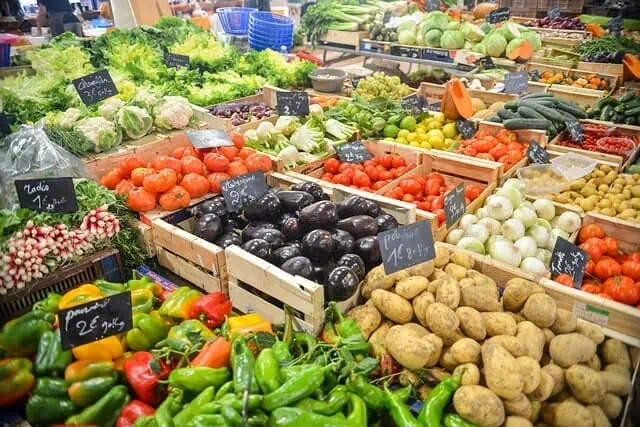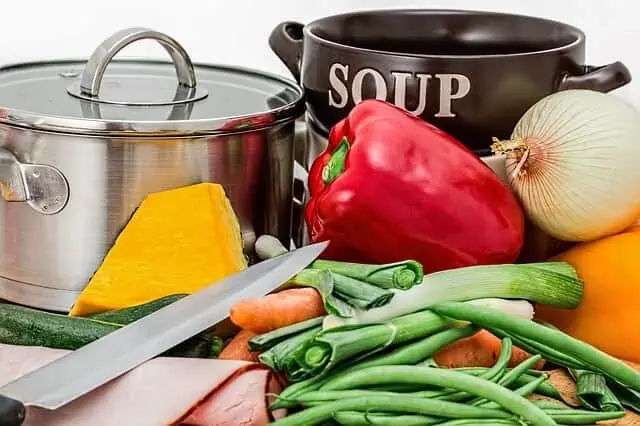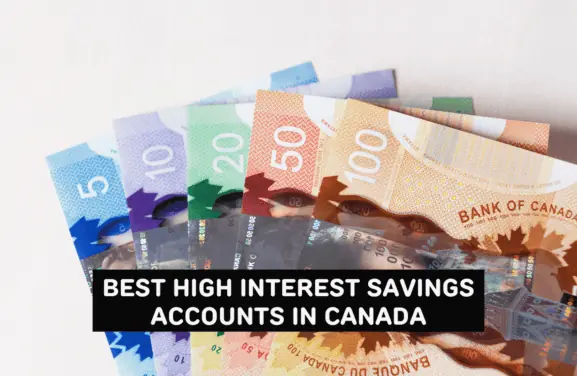Groceries are among the average family’s main expenses, so finding ways to save money the next time you are at the grocery store is vital, whether it’s using grocery cash-back apps like Rakuten, scanning your groceries and earning rewards, or using coupons and cash back credit cards.
According to Canada’s Food Price Report 2023, a four-member household can expect an increase in food expenditures of 5%-7% to $16,288 this year, or $1,357 a month (up from $1,066 in 2022).
As food expenditures continue to skyrocket, here are more practical money-saving tips to help you save hundreds to thousands of dollars on groceries this year.
Key Takeaways
- Saving money on food and groceries can start with basic tasks like creating a grocery list, using a calculator to check if you are indeed getting a discount, and checking your receipts for errors.
- Price-matching, signing up for loyalty programs, comparison-shopping, and using coupons and cash back credit cards help stretch your dollar.
- Using online cashback apps like Rakuten helps you earn welcome cash bonuses and cashback of up to 40%.
*Note: The $$ symbol below refers to potential savings of hundreds of dollars per year, and $$$ refers to potential savings of thousands of dollars per year.
How To Save Money on Groceries
1. Prepare a Grocery list
A grocery list helps you stay focused when you go shopping. Instead of walking along the aisle and picking whatever catches your fancy, a list gives you something to focus on and helps you stick with your budget.
A list prepared in advance also means you are less likely to forget what you need and can save you several repeat trips (and gas) to the grocery store.
Check out the $5 Meal Plan to help you save even more!
Potential savings: $$/year
2. Earn Cashback on Groceries
Several apps allow you to earn cash back on your grocery purchases. The general idea behind them is:
- They have different offers that qualify for cash back every week
- You can purchase items from any store of your choosing
- Scan your receipt and upload using the app
- Earn cash-back
- Redeem your cash back once you reach a threshold amount, such as $20.
Popular grocery cash-back apps include:
Canada: Drop, KOHO ($20 bonus), Caddle, Ampli, Paymi, Checkout 51, and Rakuten
United States: Checkout 51, Drop, TopCashBack, Mr. Rebates, and Ibotta
Depending on the item’s price and offer, I have seen cash-back offers as high as 40%. In addition, Checkout 51 and Caddle have cash offers to watch short videos or answer short survey questionnaires relating to certain products.
Potential savings: $$ per year, depending on what you buy and the offers available.
3. Create a Budget for Groceries
Create a monthly or weekly budget for groceries by setting aside cash in envelopes or using a budgeting app like Mint or YNAB, which connects to your bank account and automatically tracks how much you spend in each category.
With a budget, you’re likely to carefully consider each item you put into your shopping cart and avoid buying items you don’t really need.
Potential savings: $$$/year
4. Buy in Bulk
When your routine grocery items and household supplies come on sale, buy in bulk and preserve/keep for another day. We bulk up on laundry soap and other cleaning supplies, rice, meat, frozen fruits, and more when on sale and often save as much as 50%.
Get a chest freezer if you do not have one. Meat and most other foods last for up to 6 months or more when frozen.
Potential savings: $$$/year
5. Reconsider Buying Organic
Don’t get me wrong – there’s much good to be had from buying food items that are not pumped full of dangerous chemicals and other residues. However, be smart when you pay “premium” prices on items simply because they are labelled organic.
During the time I worked in regulatory food inspection, I have come upon “organic” farmers-market-type businesses re-packaging store eggs as “free-range” and “organic” and reselling them at a premium to unsuspecting customers.
6. Buy Produce in Season
Cut your grocery bill by purchasing what’s in season. When fruits are plentiful, fresh, and cheap, buy, cut them up, and freeze them, especially if you love to make smoothies.
Make jams, can what you can, and you won’t have to buy them as much when their season has passed and they become more expensive.

7. Buy Generic
Try buying the “no-name” brands at the store and compare them to their branded alternatives. More often than not, you will not find any significant differences, except in price, of course! Stop paying a premium for labels.
Potential savings: You can save as much as 50% or even more by buying generic items.
8. Avoid Buying Pre-Packaged Food
Buying fresh foods like veggies, proteins, and grains separately will almost always be cheaper than buying frozen, pre-made food. Not only that, but it will give you a much bigger portion, and you’ll learn how to make a meal from scratch.
Let’s be honest – pre-packaged and frozen foods don’t taste as good as fresh, homemade food. Sure, it’s more convenient, but will cost you more.
9. Stock Up on Sale Items
When non-perishable food and household items go on sale, consider stocking up. If it’s a steep discount, you could buy multiples of things like toilet paper, cleaning supplies, frozen food, and pantry items, as they won’t expire for a few years.
This can save you money in the long run and can make your future grocery trips shorter.
Potential savings: $$/year
10. Buy Local
During the summer, many cities and towns host farmers’ markets, where you can buy local produce, often at a discounted price. You’ll mainly be using cash, so you’ll save on taxes and any extra fees.
Since you’re buying directly from the vendor, you can often strike a deal and get better prices than you would in the grocery store.
It’s not only great for your wallet but for your health, too! Farmer’s market produce is typically fresher and healthier than what you’d find in the grocery store.
11. Use a Calculator
Retailers have mastered the art of making you spend money by bombarding you with all kinds of promotions:
- “10% off”
- “10 for $10”
- “Buy Now and Pay Later”
- “Buy One, Get One 50% Off”
Don’t get fooled! Use your phone’s calculator to see if a discount makes sense or not. How much are you actually paying? See if that 10% discount on the branded item truly makes for a better purchase than the generic one you usually buy.
Potential savings: $$/year
12. Check Your Receipt
Examine your grocery receipt before exiting the store, especially when you are buying a trolley full of items and have a long receipt.
I have detected scanner errors multiple times that either meant a product was scanned more than once by error or the sale price on an item was not reflected.
In most cases, it is just a few dollars extra; however, I have had instances where bigger errors were made. If you find that there are errors on your receipt, proceed to customer service to get it rectified.
In one case, while shopping at the Real Canadian Superstore, a sale discount (and savings of approx $18) was not reflected on my receipt. When I got to customer service, they not only corrected the error, but I also received an additional $10 gift card – I guess it was their way of saying sorry.
13. Bring Your Own Bags (BYOB)
When you go to the grocery store, remember to bring your own reusable bags, so you do not have to pay 5 to 10 cents per bag sold at the store.
It’s not a lot of money, but the savings become significant when you add it up over the course of a year.
14. Avoid Grocery Shopping on an Empty Stomach
Seriously! I generally do the grocery shopping for our family, and it is on those days when my tummy is making odd noises from missing a meal that I tend to buy a snack or buy items outside of the shopping list and go over budget.
When you are hungry, food becomes more appealing, and the likelihood of you over-spending skyrockets.
Potential savings: $$/year
15. Don’t Shop With Kids
Although your kids may want to go grocery shopping, you might have to tell them no to save money.
Stores often entice kids with things like colourful cereal boxes or put candies at eye level, making them easy to grab and put in a shopping cart. Your kids may ask for unnecessary things, which can be hard to say no to, so it’s best to leave them at home during your grocery trip.
16. Don’t Buy Bottled Water
If your city has safe drinking water, buy a water filter and drink filtered tap water instead of buying bottled water. All you’ll have to do is replace the filter every few months.
This could save hundreds of dollars on your grocery bill each year, depending on the size of your family and how much water you consume. This isn’t only good for your wallet but for the planet as well. Less plastic in landfills and the ocean!
Potential savings: $$/year
17. Scan Your Groceries and Earn Rewards
Some companies pay you to scan your grocery receipts.
Nielsen Homescan (Canada) and National Consumer Panel (U.S.) reward you for scanning the barcodes on your grocery purchases and transmitting the data to them.
The reward is generally in the form of gift points. You earn additional points for being dedicated to transmitting every week and answering surveys.
You can use your accumulated points to redeem various gift cards and other items, including jewellery, small kitchen appliances, etc.
To scan your groceries, they provide you with a free scanner. They often offer other rewards, including real money. When my wife signed up, she received a $15 Visa Prepaid Card every month for one year – that’s $180 in real money.
Potential savings: $$ per year
18. Cook in Bulk
Save dollars by cooking in bulk and then portioning out and freezing or refrigerating. You will save on time, use less energy, and eat out less often because you can simply warm up food on those days you can’t be bothered to cook.
Depending on our schedule, we sometimes cook as many as two 2-3 weeks’ worth of meals in one go.
Potential savings: $$/year

19. Grow Your Own Veggies
If you have a garden or even just a balcony, you can start growing your own produce in the summer. All you’ll need is some garden space, seeds, and soil, and you can start growing!
Vegetables like tomatoes, carrots, potatoes, lettuce, and kale are all great for growing in the summer in Canada. It might take a while to grow, but you’ll reap the benefits a few months later when you no longer have to buy those veggies in the store.
20. Buy Food in Larger Packaging
Generally, food and pantry items sold in larger packaging will be cheaper than the smaller packaging. Things like rice, pasta, beans, and so on will be a lot cheaper in bulk.
They can be stored for long periods of time so that you won’t be wasting food or money.
Related Posts:
- 20 Ways To Save Money Around The House
- 29 Ways To Save Money Daily
- 18 Creative Ways To Save Money and Up Your Financial Game
- 100 Ways Frugal People Save Money Every Day
- 15 Ways To Save Money in Winter
How To Save Money on Your Shopping in General
21. Price Match
Many grocery stores, like Walmart, NoFrills, and Food Basics, will match the price of competitor stores if you show them the flyer. You’ll need to ensure the items match up, meaning the same brand and size.
You can use an app like Rebee or Flipp or show them the physical flyer.
If you price match frequently, this can save you hundreds of dollars on your grocery bills each year.
Potential savings: $$/year
22. Earn Cash-Back
Some companies pay you cash when you use their online portal to access your favourite online store.
The most popular of these online cashback portals is Rakuten (formerly Ebates), and they provide opportunities to earn cash rebates when you shop at stores including Amazon, eBay, Walmart, Kohls, Home Depot, Hudson Bay, Expedia, Sephora, and over 1,800 other stores.
Cashback offers as high as 40% are available on Rakuten, and you get a welcome cash bonus of $30 when you sign up and make your first purchase of $30 or more.
Other great cash-back sites for your general purchases include KOHO ($20 bonus), Swagbucks, TopCashBack, MyPoints (U.S.), RebatesMe, and Mr.Rebates.
In addition to offering cash-back on your online shopping, Ebates also offers cash rewards for referring friends and family, like this offer below:

Potential savings: $$/year
23. Sign Up For Loyalty Programs
Most grocery stores in Canada have a loyalty program, whether it be PC Optimum, Air Miles, or some other way to save money or earn points. If you are loyal to one store, I strongly recommend signing up for their loyalty program.
Stores like Shoppers Drug Mart, Loblaws, and NoFrills are part of the PC Optimum program, where you can earn points on all purchases. You can redeem 10,000 points for $10 off your grocery bill.
You can go one step further and sign up for the PC Financial Mastercard, which earns you 10 points per $1 spent everywhere and earns you 30 points per litre of gas at Esso.
24. Comparison-Shop Before Making Purchases
In addition to cash-back and rebates apps, you can easily save some money when shopping by comparing prices for products across stores online and looking for the best offer.
Comparing prices has never been easier with price-comparison websites doing the work for you all in one place.
Examples of these websites include:
Canada: Shopbot.ca, Nextag.ca, PriceGrabber.ca, and PriceFinder.ca
US: Pricegrabber.com, Bizrate.com, Shopzilla.com, and Nextag.com
25. Cut Coupons
Coupons can save you lots of money annually, but don’t go to the extreme and waste valuable time. While cash-back apps like Checkout 51, Caddle, and Fetch Rewards (the U.S. only), are like the new kids on the block, couponing has been around forever.
Find coupons online here:
Canada: Save.ca, Redflagdeals.com, and Smartcanucks.ca
US: Coupons.com, Redplum.com, Krazycouponlady.com, DontPayFull, and Retailmenot.com
You can also combine coupons with other rebate apps to maximize your savings.
Potential savings: $$/year
26. Find the Cheapest Stores in Your Area
You might find yourself going to the same grocery store week after week just because you’ve been there before and find it reliable. What if you ventured out of your immediate area and tried shopping around to find better deals?
If you live in a big city, this can be easier as there are likely many stores around your area. Take some time to check out different grocery stores and compare prices.
Stores like Walmart, NoFrills, and Food Basics are considered some of the cheapest grocery stores in Canada.
If you live in Eastern Canada, check out Grocery Outlet to find almost-perfect foods at cheap prices.
Potential savings: $$$/year
27. Use Cash Back Credit Cards
With some cashback credit cards, you can earn double or triple the amount of cash back on grocery purchases.
Notable mentions are the Tangerine Money-Back Credit Card or the Tangerine World Mastercard, where you can earn 2% cash back on up to 3 categories of your choice, the main one being groceries.
Also consider checking out the BMO CashBack Mastercard, which earns you 3% cash back on groceries with no annual fee.
Potential savings: $$/year
28. Buy Quality Items
Well-researched, high-quality items can mean paying a bit more initially, but since they last longer and present fewer hassles, they can save you money in the long run.
When it comes to tools (such as a lawnmower) that I plan to use often and kitchen appliances, I prefer to buy quality and skip on annoying breakdowns, time wastage, and repair/replacement costs.
You should still do your research, comparison-shop, and look at the accompanying warranties to ensure the price you are paying is truly indicative of top-notch quality.
29. Shun Extended Warranties
The consensus is that extended warranties are generally not worth it. If you do your research and buy the right item, you will find that products are generally made to last longer than the warranty being offered, and when they fail afterward, you will have wasted cold, hard cash!
Oftentimes, the extended warranty does not cover everything you think it does, and you may be surprised by what’s in the small print when you want to file a claim.
Check your credit card’s information booklet, as it may already offer to extend the manufacturer’s warranty by up to one additional year.
Instead of purchasing an extended warranty, save that money and watch it grow. When next the salesperson asks if you want to purchase additional warranties, just say “No!”
Potential savings: $$ per year
30. Shop Clothes/Shoes on Sale
You can pretty much wear any brand of clothes you want (at a discount) if you know where/when to shop for them.
The first rule is to shop out of season – when retailers want to get rid of the old stock. For example, buy your winter gear in Spring.
Another trick is to find your preferred style at discount clothing stores like TJ Maxx, Winners, Marshalls, Ross, and others.
Don’t chase the trend and buy expensive. Once a fad passes, prices crash! To increase your savings on clothes/shoes, learn to take good care of them, so they last a long time.
Potential savings: $$/year

31. Do Holiday Shopping After the Holidays
The holidays may be over, but this is usually a great time to get the best deals possible on items you have on your wish list.
For example, after Christmas, you get steep discounts on consumer electronics, cars, gift sets, toys, decorations, winter wear, Christmas lights and trees, chocolates, greeting cards, and so on. After Halloween, candy goes on sale…you get the idea!
You can buy these items and save money during the next holiday season. I don’t think that Christmas decorations go out of fashion!
Potential savings: $$ per year
32. Avoid Impulse Purchases
I remember once buying a super-nice trench coat on the fly while at a conference abroad. It was nice, fit me perfectly, and was expensive (roughly $400).
Suffice it to say that I have come to regret this purchase – it is unused, ill-fitted to my day-to-day work reality, and remains an eyesore where it hangs in my closet unused. I guess I can refer to it as my $400 souvenir!
When you feel the sudden urge to make a pricey purchase, ask yourself:
- Do I really need this?
- Any cheaper alternatives?
- Where can I compare prices?
- Can it wait?
Buy yourself some time to mull it over. Wait a few days and see if you can still justify buying the item. You will be surprised at how much you can save this way.
33. Don’t Window Shop
How many times have you gone “window-shopping” and ended up buying something you did not budget for?
To save money, avoid window shopping, especially if you are prone to making impulse purchases. If you must wander around the malls while on vacation, consider leaving your wallet behind.
The Bottom Line
If there is one vital point to remember when buying less groceries, it is that it frees up money for other things to which you must budget for. Knowing precisely what you need helps you set aside money for your future.






All great tips Enoch!
For groceries, I would also recommend to limit the number of trips to the grocery store. It has helped us a lot. Cheers
Great point, Caroline! Thanks for stopping by!
Has anyone tried Sobey’s rewards? If you spend $100, you get a $10 card to be used on the next purchase.